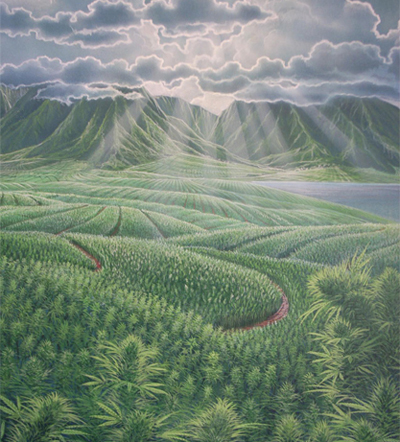“The Hawaiian spirit…was the ambient culture that we walked into and sucked up,” says artist and activist Joana Varawa of Hawaii in the 1960s. The bohemians, hippies, artists, beatniks, explorers of consciousness — there are too many words for them, and none come quite close enough to the truth — came to the island for various reasons: art, nature, the surf, to escape an outstanding warrant for one’s arrest. And the pilgrims found what was at that time a veritable paradise, relatively unspoiled by the touch of Western civilization. Ratified as a state in the latter half of 1959, Hawaii in the 1960s reflected the counterculture’s utopian ideals: a place to explore one’s inner and outer worlds amidst the otherworldly sensation of “hot lava under foot, volcanoes over head”.
FAR ART, the unprecedented exhibition at Puka Puka boutique and gallery in Maui, opened this summer on the 40th anniversary of “Rainbow Bridge”, Jimi Hendrix’s penultimate concert. The exhibition includes works by still-renegade artists such as William Ballantine III (aka TABULATOR), who smoked a joint with Hendrix himself and is currently conducting experiments in “cosmic consciousness”. Also John Schofill (creator of the original, iconic sign for Rainbow Bridge), early animal welfare activist Joana Varawa, and John Severson, the founder of Surfer Magazine.
After the jump, find our interview with Nathan and Alizé, the gallery founders and exhibition curators, about the “super-cosmic” way in which the show came together, the appeal of Hawaii, and what, exactly, the term “rainbow bridge” means.







 Facebook
Facebook Permalink
Permalink Digg
Digg Reddit
Reddit LinkedIn
LinkedIn StumbleUpon
StumbleUpon Tumblr
Tumblr
